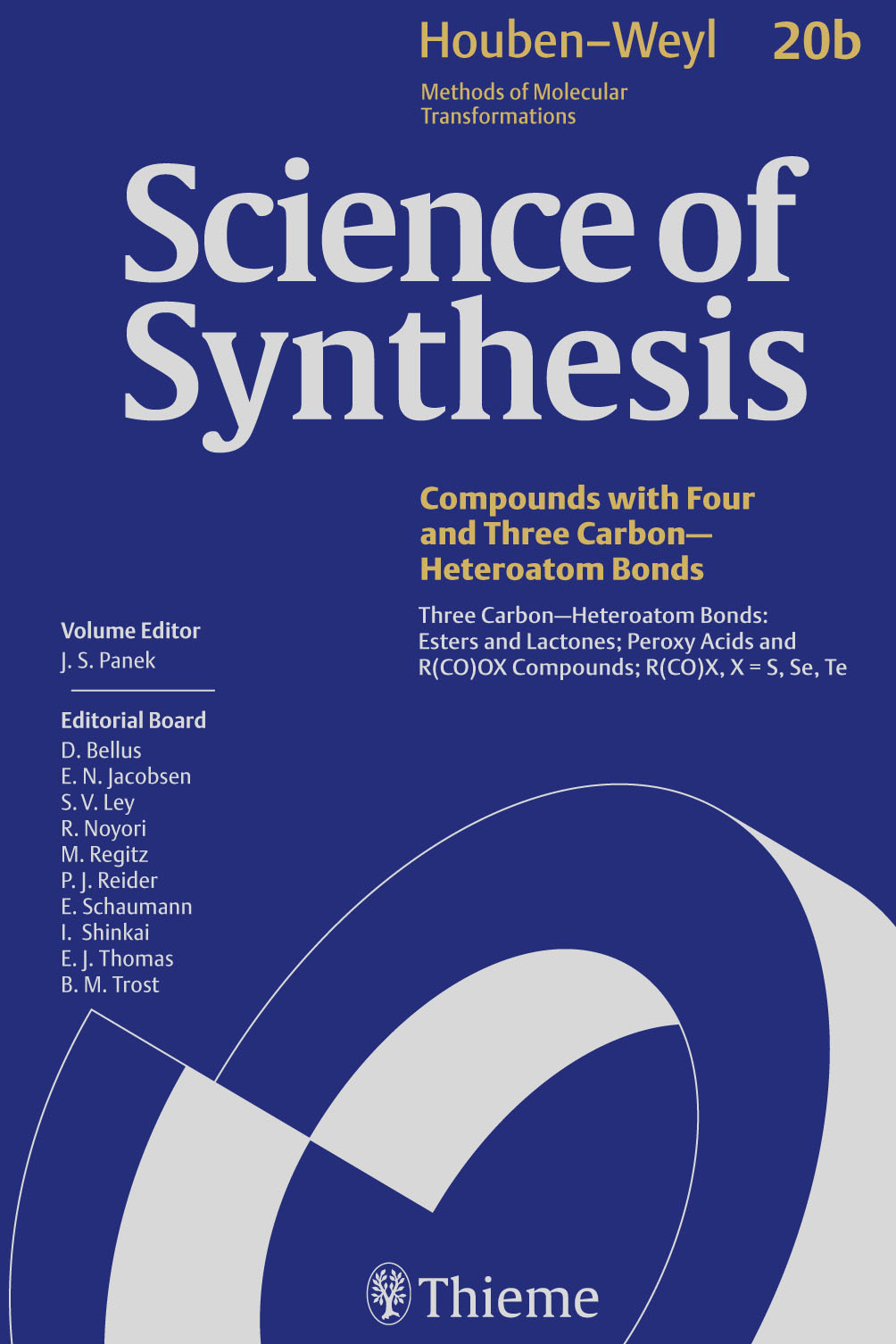You are using Science Of Synthesis as a Guest.
Please login to access the full content or check if you have access via20.5.4 Product Subclass 4: Alkanedioic Acid Esters
Please login to access the full content or check if you have access via
Masse, C. E., Science of Synthesis, (2007) 20, 987.
General Introduction
This contribution covers alkanedioic acid esters, focusing specifically on the lower homologues, i.e. oxalates (ethanedioates; Sections 20.5.4.1.1–20.5.4.1.3), malonates (propanedioates; Sections 20.5.4.1.4–20.5.4.1.12), and succinates (butanedioates; Sections 20.5.4.1.13–20.5.4.1.24), and substituted derivatives. Oxalate diesters are most commonly utilized as two-carbon electrophiles for heterocyclic synthesis,[1] as well as activating groups for α-oxo ester preparations.[2] diazo ketone preparations,[3] and regioselective alkylations.[4] Malonate diesters are primarily used as two- or three-carbon nucleophiles in enolate alkylations, conjugate additions, and condensation reactions.[5] The succinic acids and esters have traditionally found considerable use in the production of polymers[6] and lubricants where the packing of the aliphatic chains has been utilized to modify the physical and chemical properties of the polymeric systems. However, the chiral variants of these substituted succinic acids and esters have principally been utilized as chiral synthons in asymmetric synthesis.[7] Indeed, the natural isomers of many of these acids and esters have been demonstrated to be versatile chiral building blocks for the synthesis of medicinal agents, natural products, and agrochemicals. The following sections will attempt to detail some of the more commonly exploited methods for the synthesis of these product subclasses. Relevant examples will be outlined and experimental procedures will be provided whenever possible.
References
| [1] | Meeeee, M. M., Mee. Meeee., Meee. Mee. MM, (8888), 888. |
| [2] | Meeeeee, M. M.; MeMeeee, M. M., Meeeeeeeeee Meee., (8888), 8888. |
| [3] | Meeee, M.; Meeeeeeeee, M., M. Me. Meee. Mee., (8888) 88, 8888. |
| [4] | Meeeee, M. M.; Meee, M. M.; Meeee, M. M., Meeeeeeee, (8888), 888. |
| [5] | Meeeee, M., Me Meeeeee'e Meeeeeeeeeee ee Meeeeeeeee Meeeeeeee, 8ee ee., Meeeee, M.; Meeeeee, M.; Meeeee, M., Mee.; MMM: Meeeeeee, Meeeeee, (8888); Mee. M88, ee 88–88. |
| [6] | Meeeee, M. M. M.; Meeeee, M., Meee. Mee., (8888) 88, 88. |
| [7] | Meeeeee, M. M.; Meeeeeee, M. M., α-Meeeeee Meeee ee Meeeeeeeeeeeeeee Meeeeeeee, MMM: Meeeeeee, Meeeeee, (8888); Meeeeee 8, e 888. |








